Whole tones
One way to divide up the twelve notes is in intervals of whole tones (or steps). If we are starting from C, that gives us the following scale to play with:
| 1 | 2 | 3 | 4 | 5 | 6 | 7 | 8 | 9 | 10 | 11 | 12 |
| C | C#/Db | D | D#/Eb | E | F | F#/Gb | G | G#/Ab | A | A#/Bb | B |
If you try playing around with this scale, you’ll soon discover how unsettling it is, with no obvious keynote (or tonic). Although certainly not mainstream, it has been applied in classical music for hundreds of years as well as in jazz.
My example, appropriately called Tones, uses a whole tone riff on lead guitar and bass, alternating with a much more conventional melody in Bm on nylon string guitar. The contrast is quite startling.
Instruments on Tones:
Lead guitar: String Studio VS-3 from AAS
Bass: VB-Rowdy from ujam
Drums: Studio Drummer from Native Instruments
Nylon Guitar: Evolution Modern Nylon from Orange Tree Samples
Strings: Novo Essentials from Heavyocity
What do you know? I found another. This one is part of a soundtrack I created for a CD-ROM project, which tells you just how old it is.
Instruments on Panca:
Drums: VD-Solid from ujam
Bass: VB-Mellow from ujam
Glockenspiel: Mallets from Sonokinetic
Sansa: Kontakt Factory Library from Native Instruments
Shakuhachi: Kontakt Factory Library from Native Instruments

